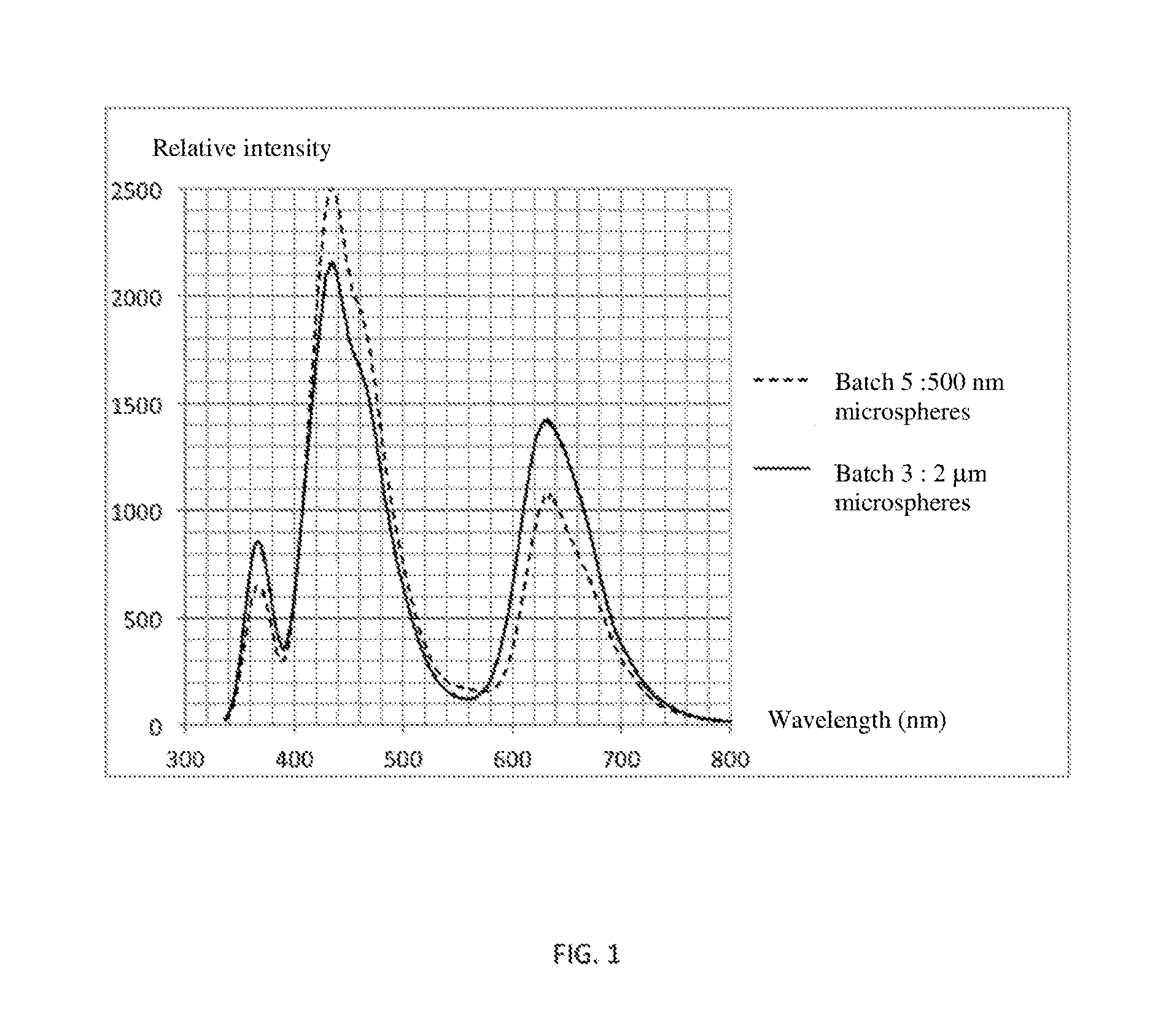Method for producing a composite material containing luminescent molecules, for rendering sustainable the electromagnetic characteristics of said material
a technology of luminescent molecules and composite materials, which is applied in the direction of luminescent compositions, semiconductor devices, chemistry apparatus and processes, etc., can solve the problems of insufficient colour fastness to light, significant ageing effect of doped matrices, and unstable optically active molecules, so as to prevent photodegradation and migration of oams, reduce the effect of oxygen permeability and low oxygen permeability
- Summary
- Abstract
- Description
- Claims
- Application Information
AI Technical Summary
Benefits of technology
Problems solved by technology
Method used
Image
Examples
Embodiment Construction
[0071]Other particularities and advantages of the invention will emerge from a reading of the description given below of particular embodiments of the invention, given by way of indication but non-limitatively.
[0072]In order to achieve the “light cascade” effect between a plurality of separate groups of OAMs, it is necessary to fulfil three conditions between two groups of OAM in order to obtain the “Foster resonance energy transfer” phenomenon, abbreviated to FRET:[0073]The emission spectrum of a molecule of a first group partially overlaps the absorption spectrum of a molecule of the second group,[0074]The distance separating the two molecules respectively in the two groups is less than 1.8×R0, R0 is the distance between the two molecules respectively in the two groups for which the energy transfer efficacy is 50%,[0075]The relative orientation between the two molecules respectively in the two groups makes it possible to define a dipole.
[0076]The structure of the molecule and the ...
PUM
| Property | Measurement | Unit |
|---|---|---|
| diameter | aaaaa | aaaaa |
| electromagnetic characteristics | aaaaa | aaaaa |
| luminescent | aaaaa | aaaaa |
Abstract
Description
Claims
Application Information
 Login to View More
Login to View More - R&D
- Intellectual Property
- Life Sciences
- Materials
- Tech Scout
- Unparalleled Data Quality
- Higher Quality Content
- 60% Fewer Hallucinations
Browse by: Latest US Patents, China's latest patents, Technical Efficacy Thesaurus, Application Domain, Technology Topic, Popular Technical Reports.
© 2025 PatSnap. All rights reserved.Legal|Privacy policy|Modern Slavery Act Transparency Statement|Sitemap|About US| Contact US: help@patsnap.com


